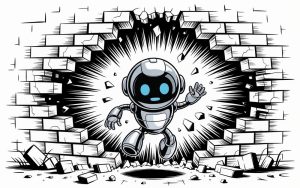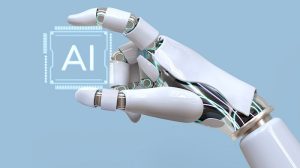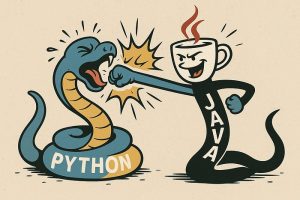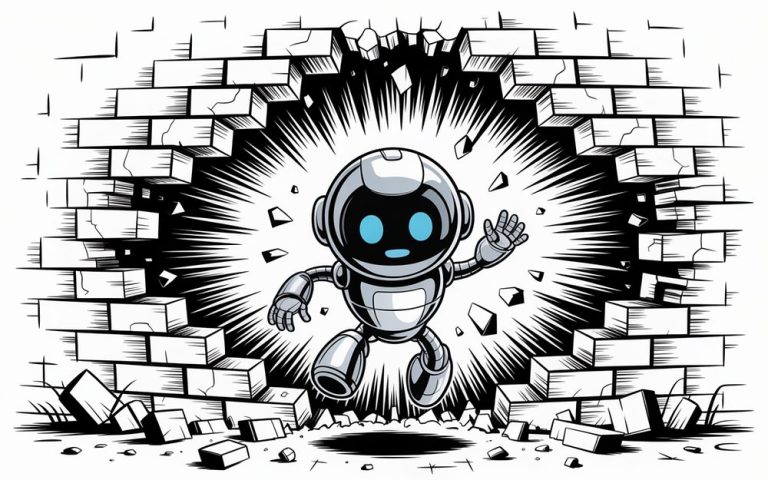I’ve been watching the AI space like a hawk for months, and lately, something has felt… off.
We have these giant language models (LLMs) like GPT-4, Claude, Gemini, and Llama 4 that can write poetry, code websites, and summarize documents in seconds. They’re amazing. But when you ask them to do something that requires real, deep reasoning, the kind of thinking that involves planning, backtracking, and trying again.. they just fall apart.
They try to solve it with something called “Chain-of-Thought” (CoT), which is basically just talking themselves through the problem. But it’s brittle. One wrong step in the “chain,” and the whole thing collapses. Plus, it requires a TON of data and makes the models slow and expensive.
I was starting to think AI had hit a wall. A very, very big wall.
But then I came across a research paper that completely shifted my perspective. It’s called the “Hierarchical Reasoning Model” and, honestly, it might be one of the most important AI papers you’ve never heard of.
The Brain Doesn’t “Think” in a Straight Line
The researchers behind this paper asked a simple, but important question: If we’re trying to build human-like intelligence, why are we ignoring the very architecture of the human brain?
Our brains don’t work like a standard computer program, executing one instruction after another. Instead, our thinking is hierarchical and works on multiple timescales at once.
Think about how you solve a hard puzzle, like a Sudoku:
- The CEO (High-Level): You have a slow, deliberate part of your brain that looks at the whole board. It makes abstract plans, like “Okay, I’ll start by focusing on this 3×3 box, because it has the most numbers.” This is your strategic, big-picture thinking. It operates slowly.
- The Expert Team (Low-Level): Then, you have a fast, focused part of your brain that does the rapid calculations. “If this is a 4, then that can’t be a 4, which means this must be a 6…” This is your tactical, detail-oriented thinking. It operates very quickly.
The CEO gives a directive, the expert team works on it rapidly until they hit a wall or solve that part, and then they report back. The CEO then takes this new information and forms a new strategy.
This back-and-forth between slow, abstract planning and fast, detailed computation is what allows us to solve incredibly complex problems.
So, the researchers built an AI model that does exactly that. They called it the Hierarchical Reasoning Model, or HRM.
I don’t know about you, but I wasn’t expecting this result:
Just look at this.
On the right side of that image are the results on some brutally difficult tasks. We’re talking about Sudoku-Extreme and Maze-Hard (finding the one perfect path in a giant 30×30 maze). These aren’t your grandma’s newspaper puzzles; they require serious, multi-step reasoning and backtracking.
The big, state-of-the-art models that use Chain-of-Thought? They scored 0.0%. A complete and total failure.
Lol, not even a single correct answer.
The HRM model, which is tiny at only 27 million parameters (for comparison, Llama 3 is 70 billion), absolutely crushed them. It achieved nearly perfect scores.
And get this, it did it with only 1000 training examples. No massive pre-training on the entire internet. It learned how to reason from scratch.
LET… THAT… SINK.. IN..
So, How Does It Actually “Think”?
This is where it gets really cool. The reason most AIs fail at deep reasoning is because of a fundamental architectural flaw.
- Standard Transformers (like GPT): They have a fixed number of layers. That means they have a fixed “computational depth.” It’s like having a brain that can only perform, say, 48 steps of thinking before it has to give an answer. For complex problems, that’s just not enough.
- Recurrent Neural Networks (RNNs): These models can theoretically “think” for longer, but they suffer from what I call “running out of steam.” After a few cycles of thinking, their internal state converges and they basically stop making meaningful progress.
HRM solves this with something the paper calls “hierarchical convergence.”
Let me show you another image from the paper that explains this better than I ever could.
Okay, don’t get scared by the “forward residuals” label. All it means is “how much is the model’s ‘thought process’ changing at each step?”
- The Middle Graph (Recurrent Neural Net): See how the line quickly drops to zero? That’s the model “running out of steam.” It converges and stops thinking. Game over.
- The Right Graph (Deep Neural Net): This shows “vanishing gradients.” The thinking happens at the beginning and end, but the middle layers aren’t doing much. It’s shallow.
- The Left Graph (HRM): Now look at this beauty. The blue line (the High-level “CEO”) steadily converges, keeping the overall strategy in mind. But the orange line (the Low-level “expert team”) works intensely, converges on a sub-problem, and then spikes back up. That spike is the CEO giving it a new task! Means, the model is taking a breath and starting a new phase of intense thinking, over and over again, until the problem is solved.
This is why HRM can think so “deeply.” It never runs out of steam.

















+ There are no comments
Add yours